Originally posted on Pretty-Scary.net
Black women in cinematic history have long faced the double-barreled Hollywood stigma of race and gender “otherness,” their fleeting moment of glory coming in the ’90s when “You go, girl!” was introduced into the popular lexicon. On the more formal level of Oscar recognition, meanwhile, the black female images thus far celebrated by the Academy of Motion Picture Arts and Sciences have been limited to “the three ‘M’s”: mammies (Hattie McDaniel), mystics (Whoopi Goldberg) and mammaries (Halle Berry).
With Goldberg’s career on permanent hiatus, the number of black actresses who now routinely headline mainstream theatrical films holds tenuously at one: Halle Berry (although any more like Catwoman might change that real quick). Queen Latifah had a run for a while, but she, like so many black actresses, found safer avenues for acceptance in music, TV and being “straight.” The Taraji Hensons, Gabrielle Unions and Sanaa Lathans of the world get occasional leads in all-black fare, but mainstream top-billing is elusive.
However, a peculiar and unexpected refuge has emerged for other black women struggling to find steady gigs: horror movies.
Since the 1970s, horror films have provided something of a haven for black actresses, serving up roles they wouldn’t otherwise get in more mainstream Hollywood genres and freeing them from the obligation of doing it doggy-style with Billy Bob Thornton. Sure, “types” still exist in these roles (the voodoo sexpot, the mystical darkie), but in general they tend to be larger, more prolific parts — often leads — with less of the stereotypical finger-wagging characteristics detailed in the 2001 study The Black Image in the White Mind: Media and Race in America (e.g., 89% of black actresses were found using vulgar language on screen vs. 17% of white actresses. Holy shit!).
In the ’70s, “blaxploitation” horror provided a wealth of substantive lead roles for black actresses (Abby, Sugar Hill, Ganja and Hess), even trickling over into mainstream films (The Omega Man, The Beast Must Die) and overseas into foreign productions (Black Mamba, Night of the Cobra Woman).
In the ’80s, as Reaganomics saw unemployment “trickle down” into all phases of African-American life, opportunities for black actresses dried up, but there were still notable exceptions like Breeders, Vamp, Angel Heart and one of the only all-black horror films of the decade, the uber-campy Black Devil Doll from Hell.
But things picked up as the ’90s dawned and have looked back little since. Black women have been featured as the heroine in major horror releases like Gothika, Demon Knight, 28 Days Later, Supernova and Alien vs. Predator, while Aaliyah’s final screen role came as the titular Queen of the Damned. Plus, with the straight-to-video industry booming, they’ve played lead roles in poorly-spelled “urban horror” fare like Cryptz, Zombiez, Vampz and Leprechaun: Back 2 tha Hood.
In the 21st century, a string of black female-led psychological thrillers — Beyonce in Obsessed, Taraji P. Henson in No Good Deed, Sanaa Lathan in The Perfect Guy, Regina Hall in When the Bough Breaks — have found an audience amongst filmgoers who might shy away from hardcore horror but are eager to watch black women put the smack down.
Whether it’s ingrained stereotyping of heroic empowerment, black horror heroines are typically hard-nosed and take-charge, unlike the often weepy, shrieking “final girls” of slasher fame. They tend to kick proverbial ass, even going so far as to drop some kung-fu action in flicks like Devon’s Ghost and Shadow: Dead Riot.
As such, they typically don’t survive the rigid moral structure of conventional slasher films (See Sleepaway Camp 2 and 3, Nightmare on Elm Street 4, Friday the 13th Part 3 and 5 though 7, Dr. Giggles, Halloween 2, Halloween: Resurrection, Scream 2, etc.), perhaps because they’re more prone to insult a maniacal killer’s sexual prowess — as Kelly Rowland does in Freddy vs. Jason — and then deal with the consequences. Nevertheless, the sistas have established quite an impressive history in the horror genre. Following are some select highlights. You go, girls! Or stay. Really, you should stay.
Select Filmography of Black Women in Horror Cinema
1930s:
- Chloe, Love Is Calling You (1934): Voodoo priestess Georgette Harvey steals a white baby and raises her as her own.
- Ouanga (1936): Voodoo priestess Fredi Washington tries to steal a white man and love him as her own.
- The Devil’s Daughter (1939): An all-black remake of Ouanga.
1940s:
- There was a lot of horror, but apparently not a lot of black women.
1950s:
- How to Make a Monster (1958): Paulene Myers has a small but pivotal role in this schlocky monster movie that’s a “meta” semi-sequel to I Was a Teenage Werewolf and I Was a Teenage Frankenstein.
1960s:
- The Leech Woman (1960): Estelle Hemsley and Kim Hamilton play old and young versions of the same “mystical darkie” in this lesser Universal feature.
- The Horror of Party Beach (1964): Walking stereotype Eulabelle Moore somehow saves the day (sort of) in this campy B-movie.
- The Rape of the Vampire (1968): In this French film from erotic horror director Jean Rollin, Jacqueline Sieger plays the rare black female primary antagonist, a vampire queen intent on procreating a race of vampires.
1970s:
- The Omega Man (1971): Charlton Heston as a Jesus figure, and Rosalind Cash as his brown sugar Mary Magdalene.
- Blacula (1972): Classic blaxploitation version of Dracula with Vonetta McGee as the object of Blacula’s unhealthy obsession.
- Night of the Cobra Woman (1972): Philippine import starring Marlene Clark as said snake woman.
- Ganja & Hess (1973): Artsy, sensual vampire love story with Marlene Clark as Ganja.
- Scream Blacula Scream (1973): Mildly inferior sequel with the mildly superior Pam Grier.
- Abby (1974): Blaxploitation version of The Exorcist starring Carol Speed and her eyebrows.
- The Beast Must Die (1974): Is Marlene Clark a werewolf? Story at 11:00.
- Black Mamba (1974): Once again, Marlene Clark + Philippines + snakes = evil.
- Old Dracula (1974): Dracula’s wife (Teresa Graves) is black! And foxy!
- Sugar Hill (1974): Zombie revenge flick starring Marki Bey and her legion of the living dead.
- Poor Pretty Eddie (1975): Leslie Uggams adds a racial angle to the seedy “rape-revenge” fare made popular in the ‘70s.
- Dr. Black, Mr. Hyde (1976): Marie O’Henry and Rosalind Cash try to stop hooker-slaying Mr. Hyde.
- Nurse Sherri (1978): Marilyn Joi plays a black nurse (not the titular Sherri) who has to save the day when her white coworker Sherri is possessed by the spirit of a cult leader.
1980s:
- Tanya’s Island (1980): Surreal fantasy/horror genre-bender starring Vanity and hot (?) girl-on-ape action.
- Black Devil Doll from Hell (1984): Indescribable low-budget puppet porn starring Shirley L. Jones.
- The Bride (1985): Jennifer Beals is the bride of Frankenstein. Leg warmers optional.
- Breeders (1986): One of the first non-all-black horror movies to star an all-black woman (Teresa Farley).
- Mark of Lilith (1986): British interracial lesbian vampire short.
- Vamp (1986): Grace Jones, scary even without the make-up, plays one of the most stylish vampires ever.
- Angel Heart (1987): Bayou voodoo featuring Lisa Bonet’s infamous bloody sex scene.
1990s:
- Def By Temptation (1990): Cynthia Bond is the succubus; Kadeem Hardison is the
succubee. - The Borrower (1991): Rae Dawn Chong battles alien headnapper.
- Critters 4 (1991): Angela Bassett in an early role she’d like to forget.
- Body Bags (1993): This anthology’s first tale, “The Gas Station,” is one of the rare non-“urban” slashers starring a black woman (Alex Datcher).
- The Stand (1994): Ruby Dee is the Yoda-like prophet on a mission from God.
- Children of the Corn III: Urban Harvest (1995): Mari Morrow experiences Amish love…and Amish evil!
- Demon Knight (1995): Jada Pinkett, demon slayer.
- Vampire in Brooklyn (1995): Angela Bassett upgrades from Critters 4…but not by much.
- Spirit Lost (1996): Ghostly Cynda Williams haunts (and humps) the new resident of her house.
- Scream 2 (1997): Jada Pinkett and Elise Neal prove that you can have more than one black female in a horror movie…and they can both die.
- Beloved (1998): Oprah’s on! And she’s in a haunted house!
- The Prophecy II (1998): Jennifer Beals is pregnant with a baby angel, although really, aren’t they all angels? Awww… </P>
2000s:
- Supernova (2000): Angela Bassett vs. an alien, um, thing.
- 13 Ghosts (2001): Hey, Rah Digga survives!
- Code Red: The Rubicon Conspiracy (2001): Marjean Holden kicks alien tushie in this Sci Fi Channel mainstay.
- 28 Days Later (2002): Naomie Harris stompin’ zombies in the UK.
- Cryptz (2002): Beware of lap dances in a vampire strip club.
- Queen of the Damned (2002): Aaliyah may damn you, but you’ll enjoy every minute of it.
- Arachnia (2003): Irene Joseph leads the way against giant, straight-to-video spiders.
- Gothika (2003): Halle Berry sees dead people.
- Leprechaun: Back 2 tha Hood (2003): Evil Irish imp meets “hood” sister Tangi Miller.
- Alien vs. Predator (2004): Sanaa Lathan can indeed hold Sigourney Weaver’s jock.
- Frankenfish (2004): Mutant snakehead fish invade the swamp, and K.D. Aubert is there to greet them…with a shotgun.
- Vampz (2004): Female vamps — er, “vampz” — get their drink on.
- Devon’s Ghost: Legend of the Bloody Boy (2005): Ex-Power Ranger Karan Ashley gives a ghost the business end of a kung-fu lesson.
- The Evil One (2005): Candace “I’m not Mariah” Carey must save her daughter from a serial killer…or not.
- Way of the Vampire (2005): Vampire Denise Boutte is Dracula’s right-hand woman, and lives to make a sequel.
- Zombiez (2005): Jenicia Garcia evades the lamest zombies ever put on film.
- Shadow: Dead Riot (2006): Carla Greene is the chosen one in this combination of women-in-prison exploitation, zombie horror and chop-socky kung-fu.
- Ice Spiders (2007): The other Vanessa Williams battles snowy arachnids in this SyFy fare.
- Sorority Sister Slaughter (2008): Slaughters don’t only happen in white sororities.
- Obsessed (2009): Beyonce puts the kibosh on this fatal attraction.
- Single Black Female (2009): It’s like Single White Female, but black.
- The Call (2013): Halle Berry is a 911 operator tracking down a serial killer who’s kidnapped a young girl.
- No Good Deed (2014): Taraji Henson is the only woman on Earth who wants Idris Elba out of her house.
- The Perfect Guy (2015): Sanaa Lathan is the target of a fatal attraction from Michael Ealy in this thriller.
- When the Bough Breaks (2016): When a surrogate mother sets her sights on the soon-to-be-father, soon-to-be-mother Regina Hall ain’t havin’ it.

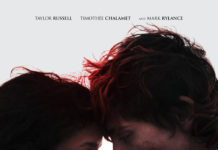
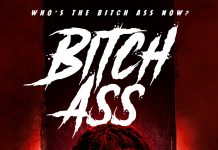

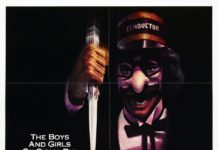
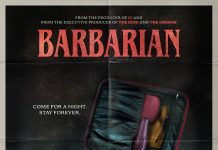
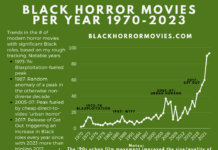
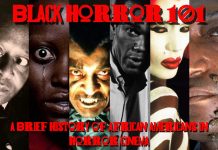
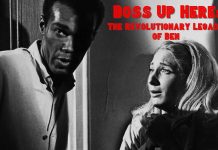
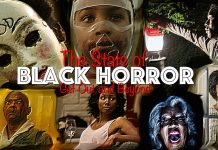
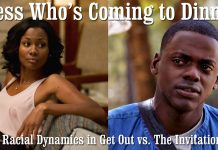
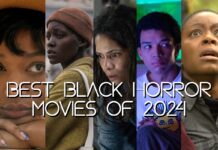
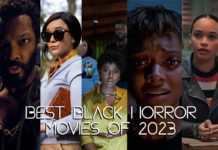
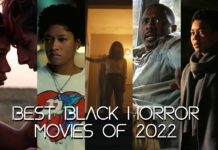


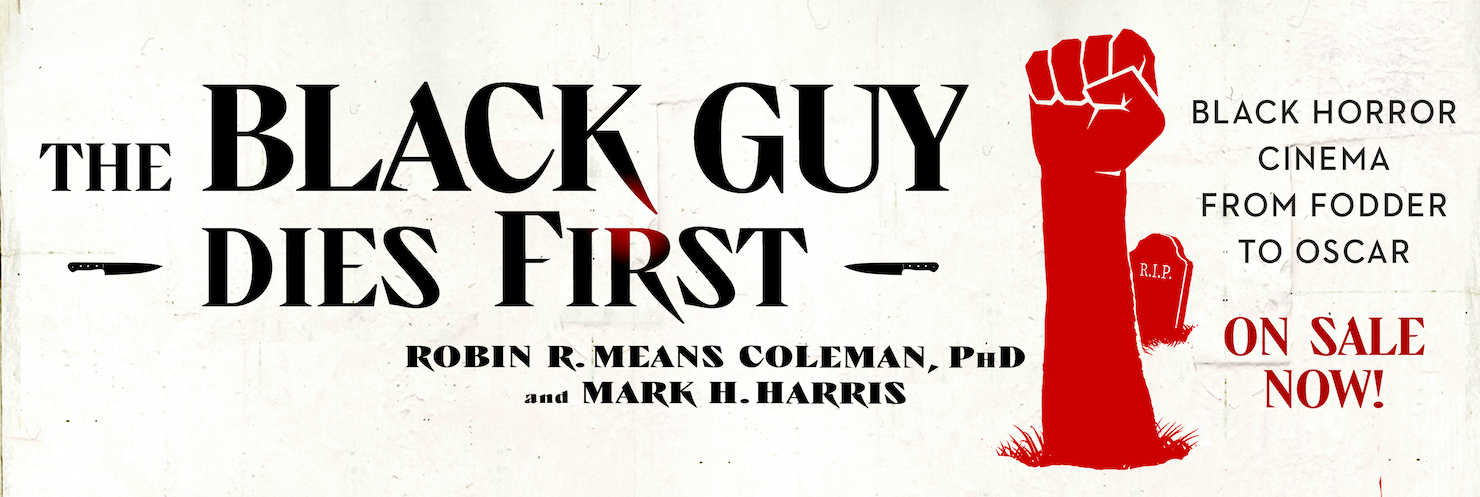
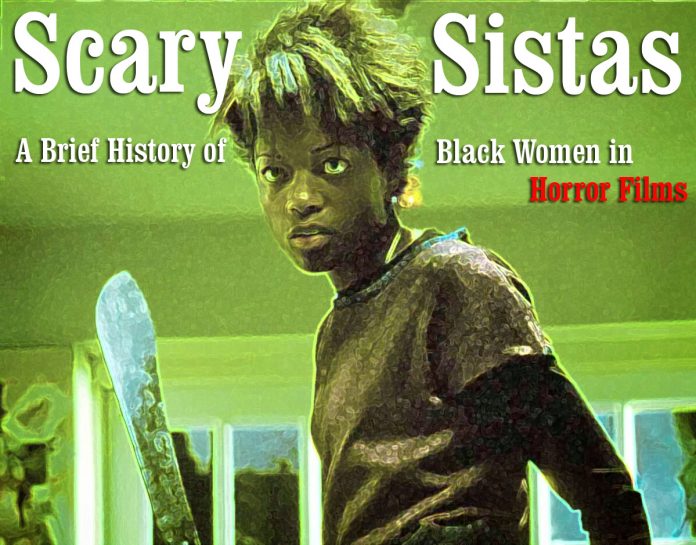

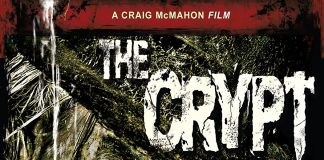
Who wrote this article?